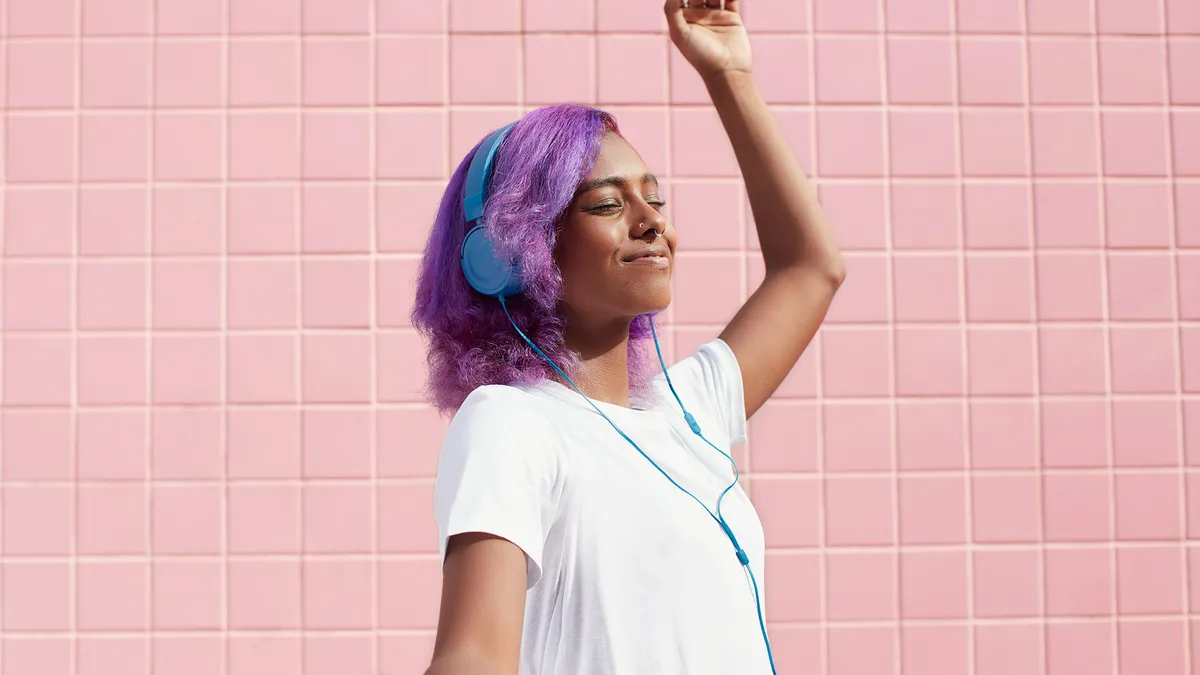Audio streaming giant Spotify recently bought the maker of live audio app Locker Room, another sign of the growing interest in the social audio industry popularized by the buzzy Clubhouse app. These new audio platforms are in the early stages of consumer adoption, but like the podcasting and social media platforms that came before them, they have the potential to give marketers more ways to meet consumers where they spend time.
Because social audio is so new, uncertainties remain around how brands can and should participate in the format. Currently, invite-only Clubhouse doesn't carry advertising because it's more focused on the user experience and rapidly building an audience — similar to the approach nascent social apps took before it. The startup saw its user base jump from 600,000 in December to 12.7 million by mid-March, per App Annie data emailed to Marketing Dive. More established social platforms typically see much higher downloads, but Clubhouse is in the early stages of providing a positive experience for participants, which can't happen if it crashes while carrying millions of live audio chats before ironing out technical kinks.
"If they're successful there, they'll be the first social media platform to scale that [social audio] model," said Ari Applbaum, vice president of marketing at podcast search startup Audioburst. "All other social media focus on building the base and then once you get to critical mass and you have enough content that could be monetized, then you bring in the ads."
Clubhouse's growth has drawn interest from social media giants like Facebook, LinkedIn and Twitter. Facebook this week announced plans to launch several social audio products, including live audio rooms in its popular Groups that are focused on specific topics and specialized interests. Creators who host live audio rooms will be able to charge people for entry or a subscription, giving them a way to monetize their audio content. Facebook's announcement didn't mention whether its new products would carry advertising, though the social network behemoth has a history of incorporating ads into its platforms after some maturation.
Monetizing creator content
Clubhouse may adopt a similar monetization model to support creators, similar to what Patreon has done for creative professionals. One of the big unknowns is whether Clubhouse will eventually seek people's permission to record and archive the live audio sessions for replay, giving it an opportunity to sell ad inserts into programming that doesn't disappear as soon as the live discussions end.
"They may have to start to complement the synchronous content with asynchronous," Applbaum said. "Once you have that concept, you want to be able to analyze it and then make that data available to brands so they can contextually target by audience or specific rooms or content that's being said within a room."
"All other social media focus on building the base and then once you get to critical mass and you have enough content that could be monetized, then you bring in the ads."

Ari Applbaum
Vice president of marketing, Audioburst
The archiving of audio sessions also may help brands with their social listening efforts to gain consumer insights as people share their opinions online, he added.
Spotify's business model
In addition to social media, major players in the audio streaming space like Spotify may provide a model for how trends around social audio develop and the ways in which brands dabble in these new content formats. Spotify generates almost 90% of its revenue from paid subscriptions to its ad-free service, but the audience for its ad-supported service grew 30% to 199 million worldwide last year.
With its acquisition of Betty Labs, the maker of Locker Room, Spotify is likely to develop a monetization model that may resemble the one for its core audio streaming platform. In that case, advertising would mimic its radio-esque spots in ad-supported streaming music and podcasting, except that people will hear an ad before they enter a social audio room. That kind of advertising could be scaled across a variety of rooms, which Clubhouse currently limits to 5,000 participants at a time.
"It's quality over quantity right now. No brand is going to be to able to do anything at scale right now, and that's OK," Applbaum said. "You can get a few influencers, have some interesting discussions going, and then try to amplify that elsewhere. It's just going to be a place to experiment, to build some brand affinity, to build some buzz for the next few months, at least."
Influencer marketing potential
Brands that seek to collaborate with influencers, especially micro-influencers with small but dedicated followings, on social audio programming will have to take the same precautions with disclosures that they do in other channels. With the Federal Trade Commission's ongoing crackdown on influencers who don't properly label sponsored content, marketers must tread carefully on new apps where disclosure requirements appear murkier.
"What Clubhouse has going for it right now is authenticity — you don't want to mess around with that," Applbaum said. "You have to be very explicit and clear about saying if this is sponsored or not, and you're free to talk about this brand. But if you do it in that way and the influencer is interesting and engaging and draws a crowd, you can have an effective experience like that."






















